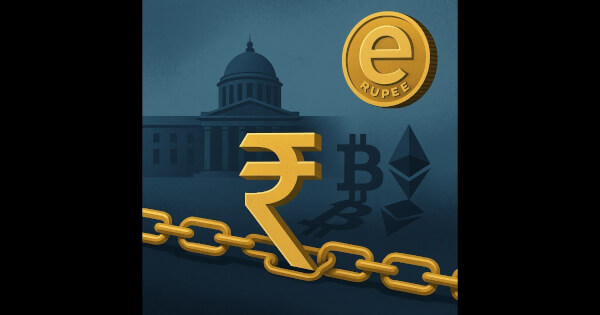RBI's Crypto Squeeze: A 2025 Reality Check
Khushi V Rangdhol Jun 12, 2025 17:38
RBI is tightening crypto access via banks, CBDC expansion, and compliance, not banning it. Incremental measures aim to contain, not prohibit, crypto use.

India isn’t gearing up for an overnight ban on crypto. Instead, the Reserve Bank of India (RBI) is quietly tightening three levers—bank access, central-bank-digital-currency (CBDC) adoption and compliance overhead—while repeating that private tokens can “hamper financial stability and monetary-policy transmission.”
What the RBI just said
At the June 2025 Monetary Policy Committee press conference, Governor Sanjay Malhotra told reporters that the central bank’s concerns about crypto “remain exactly where they were before the Supreme Court ruling,” adding that large-scale retail speculation “can hurt financial stability as well as our ability to steer liquidity and rates.”
How the squeeze plays out
Bank rails - Major lenders still flag or throttle exchange-linked transactions. The only documented episode is a May 2021 Reuters scoop revealing “informal guidance” that urged banks to pare crypto exposure after the Supreme Court quashed the formal ban. No publicly verifiable repeat of those unwritten nudges has surfaced in 2024-25, but exchange executives say the chill persists.
CBDC expansion - The retail e-rupee pilot now spans seventeen banks and roughly six million users. Fintech app Cred became the first non-bank participant in January 2025. Offline transfers and small-scale “programmable” tokens—for example, vouchers that can be spent only at designated merchants—are now being tested, though the RBI hasn’t demonstrated live auto-tax-deduction or wallet-blacklisting features.
Compliance dragnet - Every virtual-asset service provider must register with the Financial Intelligence Unit under a July 2023 order. Platforms that fail to do so risk being geo-blocked by internet-service providers and payment gateways. Yet India still lacks a dedicated exchange-licensing law, leaving companies in regulatory limbo and pushing legal costs ever higher.
Early market fallout
India’s largest exchange, WazirX, lost about US $235 million in a July 2024 breach attributed to North Korea’s Lazarus Group. The shock, combined with spotty banking support and hefty taxes, has encouraged several mid-tier platforms to redomicile to Dubai, although the true count is unclear.
Why the RBI worries
On-chain analytics show that during sharp rupee swings, retail money often shifts into USDT and USDC. Chainalysis meanwhile ranks India No. 1 in grassroots crypto adoption—proof, regulators argue, that large troves of capital could migrate offshore. The RBI also tracks Bitcoin’s occasionally high correlation with the U.S. Dollar Index; that correlation hit 0.84 on 19 November 2022, reinforcing fears that citizens might flee to dollar-backed tokens in a crisis.
Industry push-back
Lawyers have filed, or are preparing to file, public-interest suits in the Delhi High Court seeking a formal exchange-licence regime and an end to what they call a “constructive banking embargo.” Separately, the Bharat Web3 Association is lobbying for a 15 percent flat capital-gains rate, SEBI-style custody rules and RBI-monitored nodal accounts as a compromise.
Three plausible paths to 2027
- Slow strangulation (about 55 percent probability). Banks keep transaction ceilings; the e-rupee expands to government subsidies and payrolls; retail trading shifts to peer-to-peer desks.
- Regulatory breakthrough (about 30 percent). A 2026 Digital-Asset Bill, loosely modelled on the EU’s MiCA, introduces licensing tiers and token taxonomy while keeping—perhaps trimming—the current 30 percent tax.
- Hard-ban shock (about 15 percent). A systemic scare, such as a stable-coin run, triggers an emergency RBI circular. The Supreme Court would likely stay the order, but exchanges could face months of paralysis.
Staying nimble in 2025
- Keep at least one current account with a crypto-tolerant bank and a back-up peer-to-peer on-ramp.
- File tax returns even for trades under ₹10 000 and archive logs quarterly on an RBI-recognised audit portal.
- Hold a core 60 percent BTC/ETH, 30 percent compliant India-linked projects (e.g., Polygon) and 10 percent cash for policy shocks.
- Maintain a fully-KYC’d offshore wallet, plus proof-of-funds, in case domestic rails tighten further
Bottom line
Delhi’s strategy is containment, not prohibition: restrict fiat lifelines, raise compliance costs, and make the e-rupee the most convenient rail. Incremental tightening—not a sudden ban—remains the base-case outlook through 2026. Staying compliant, diversifying liquidity and watching the legislative calendar are the best ways to keep a crypto stack safe.
.jpg)